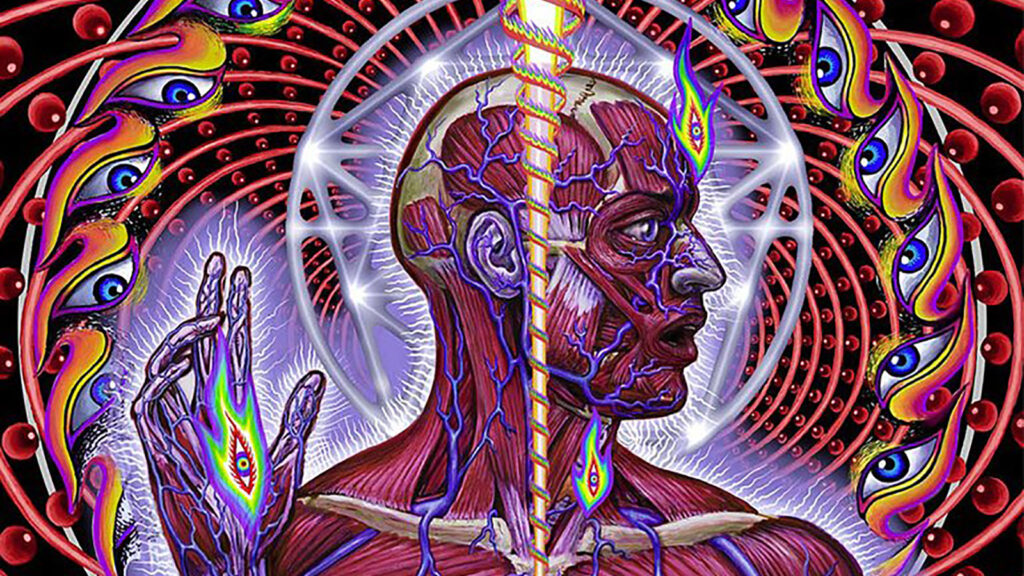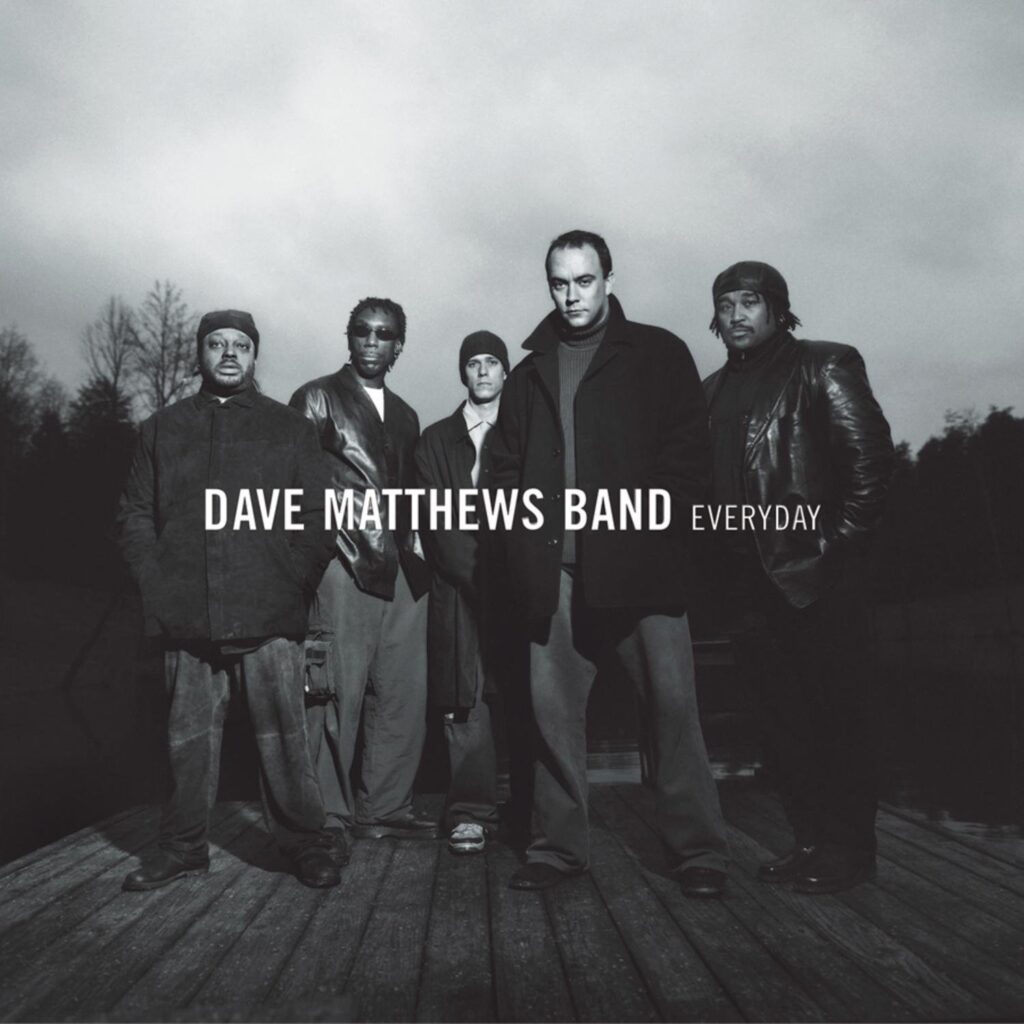Tool‘s Lateralus turned 20 on 05/15/21.
This is a big one. I’ve missed some other milestone albums on/around their big anniversaries, but, to reference the album’s opening’s minutes, I clutch this one like the cornerstone that it is. If I were to put together the fabled desert island list, this album would be one of the first listed. Lateralus is easily my favorite album by one of my all-time favorite bands.

Lateralus occupies an interesting space in the Tool discography. Some, including yours truly, consider it the band’s best album. Others, including some friends of mine, see it as the “beginning of the end” of the band’s original sound. While its predecessors Opiate (1992), Undertow (1993), and Ænima (1996) include some more progressive elements (mixed meter, exploratory instrumental sections, lengthy arrangements), the albums were generally leaner and featured shorter rockers in the aggregate, particularly the first two releases. Aside form the music, Alex Grey’s art and visual palette became closely associated with the band upon Lateralus‘s release, and has remained a fixture since. In short, the band became “artier” with Lateralus, and 2006’s 10,000 Days and 2019’s Fear Inoculum followed suit, culminating in the latter.
Lateralus sort of began the now-common tradition, at least among the rock community, of impatiently awaiting a new Tool album. Ænima was a smash hit, but it took another five years for Lateralus to surface. It then took another five years for 10,000 DAYS to be released, and then another thirteen years for Fear Inoculum. Personally, I went deep down the rabbit hole in 1997 starting with my first Tool concert, seeing the band again the following year, an excellent show that opened with “Flood,” featured Keenan in his Rev. Maynard attire, and included a rare performance of Tool’s cover of Ted Nugent’s “Stranglehold” (featuring Buzz Osborne of The Melvins, no less). I spent many mental and emotional calories during the subsequent high school years devouring what I could: music, lyrics, endless tributaries on both Toolshed.down.net as well as the band’s “newsletters” on the official site. All that waiting and devotion, and I felt like I really accomplished something when news of Lateralus broke along with the release of “Schism,” the band’s first new single in years.
Anticipation for the new album was greatly compounded when Tool announced a mini “preview” tour scheduled for the week of the album’s release before a full North American tour that fall after a summer abroad. Theater dates (intimate for an arena-filling act) with an intermission and no opening act in four cities: Atlanta, Chicago, Detroit, New York. Though the Detroit show sold out in under two minutes, I was fortunate to snag a pair to attend with my cousin. The album would come out Tuesday 05/15, and on Friday 05/18 we’d see them at Detroit’s State Theater. I was ready for my head to explode come mid-May. I remember the countdown consuming many of my waking hours that spring.
My loitering at the local Meijer on Monday night 05/14 paid off, as I bought a copy once the album hit the shelf at midnight. And then I heard “The Grudge” for the first time, culminating in that epic scream toward the end. It hit like a ton of bricks in the best way possible.
Unlike Ænima, Lateralus has only a couple of of small, connective tracks (acting much like Einstein on the Beach‘s knee plays), and none including the more humorous aspects of those on Ænima (which was also dedicated to comedian Bill Hicks). Of course, there is the trademark entertaining hidden track, this time a chaotic emergency call from Area 51, but there’s nothing on the level of “Message to Harry Manback” or “Die Eier von Satan.” Whereas Ænima ends by opening the “Third Eye,” Lateralus spends much of its 79 minutes exploring the ramifications of such an awakening. Instead of the aforementioned knee plays, a number of the tracks on Lateralus flow come in pairs (“Eon Blue Apocalypse” into “The Patient” and “Parabol” into “Parabola”) or groups (the album’s exploratory final ~third of “Disposition” into “Reflection” into “Triad”). What’s more, the whole album flows pretty seamlessly from beginning to end almost as one large work. Even now, 20 years and countless listens later, I generally think of Lateralus more at the album level—or at least the “section” or “movement” level—than the individual songs.
[This isn’t technically an album review, so I won’t get bogged down in the minutiae. I’ll go ahead and note Tool’s trademark usage of mixed meter, as it’s often a focus of such articles. It’s true, and it’s compelling, but it’s also organic—it doesn’t sound forced. For example, Tool’s one of the few acts that can release “Schism” as the lead single—later a bonafide hit—which spends much of the time alternating between 5/8 and 7/8.]
Looking at the more micro level, though, the individual songs and sections are formidable. “The Grudge” sets the stage for the rest of the album by previewing many of its different facets: roiling mixed meter; contemplative nuance; loud rhythmic, lyrical, and sometimes guttural assaults; and straight-ahead driving rock. It served as an effective opener in concert for many years after its release. “The Patient” scratches me where I itch every time. It’s a type of slow burn at which the band is particularly adept, much like Ænima‘s “Pushit,” another favorite. (When I wrote briefly about Fear Inoculum a while back, I used “The Patient” as a reference point.) “Parabola” is the album’s lone straight-ahead rocker, the sole banger in 4/4, and it serves as a great release after the slow build that is “Parabol.” “Ticks & Leeches” is a sonic assault and almost serves as a reset for the rest of the album.
“Lateralus” is not only the album’s namesake but this fan’s favorite Tool song (and one of my favorite songs, period). It was after the first time I heard it, and my appreciation has only grown throughout the years. (Yes, again, mixed meter and Fibonacci and all that jazz…) The music is great, and, as someone lost in their own thoughts much of the time, the lyrics and message only get better with age. I could go on and on (and perhaps I will at some point down the line), but suffice it to say it’s the album’s crown jewel for me. The rest of the album features some psychedelic exploration via the triptych of “Disposition,” “Reflection,” and “Triad” (followed by the Area 51 exploits of “Faaip De Oaid”). I think for some the album really ends with “Lateralus,” but it’s noteworthy that “Disposition” and “Reflection” (and sometimes “Triad”) were fixtures of the live show for years—so, the material was clearly more than studio experimentation to the band.
I mentioned having tickets to see Tool days after the album’s release for what was to be my third time seeing the band. Suffice it to say it was the best concert of any type I’d seen at that point. And now, 20 years later, I easily put that in the top five or even top three shows of any type I’ve ever attended. (There are others I’d have to think about, but that one’s an automatic “yes.”) It was a great concert, but it also was one of those experiences in which the event matched the moment. It exceeded the immense hype. And, given how quickly it sold out, the entire audience was deeply invested in the band, the new album, and the evening as a whole. (Also there were the added touches, such as going with my cousin, a fellow die-hard fan, and running into an old friend with whom I had previously lost touch.) Maybe someday I’ll gush over that show at length. (I did on fan forum days after the show…I wrote one of the site’s longer concert reviews, at least at the time…not going to link to my adolescent adrenaline-fueled ranting though.)
For the record, the 05/18/01 (20 years ago today) setlist included:
“The Grudge”
“Stinkfist”
“Forty Six & 2”
“Prison Sex”
“Schism”
“Pushit”
“Disposition”
“Reflection”
(intermission)
“Sober”
“Parabol”
“Parabola”
“Aenema”
“Opiate”
“Lateralus”
Beyond the excitement that was release week, I saw Tool a number of times on afterward for album support tours the next couple years. Notably my next show was on 09/13 in Grand Rapids, which was actually postponed from two days before on 09/11/01, then a few days later in Detroit (including “Undertow”!). Fall of 2002 had quite a run of shows within weeks of one another: Detroit, Moline (IL), Kalamazoo (including “Cold & Ugly,” “H.,” and “Third Eye”!), East Lansing (my future home for a decade, unbeknownst to me at the time). Of course, my interest and passion has continued through to the present. I won’t go through a thorough accounting of each show—those listed above and those not—but there’s something notable I can recall about each one.
Lateralus‘s successors are cut from a similar cloth. Both 10,000 Days and Fear Inoculum share the overall sonic and visual (i.e., Alex Grey) aesthetic, making Lateralus a definite turning point for the band. While there are detractors, I consider it just another step (arguably a giant leap) in the band’s gradual evolution.
Anniversaries of other album releases haven’t struck me in way that makes me “feel old,” but this one does to a small degree. Possibly because it was coupled with a great concert-going experience that made an indelible mental time-stamp, making it more of a “life event” than my running to the store for a new CD (of which I have many fond memories also). Who knows.
—
Other notable album anniversaries:
Dave Matthews Band’s Everyday
Dave Matthews Band’s Crash
Tool’s Ænima
Smashing Pumpkins’ Mellon Collie and the Infinite Sadness
[NOTE: The original post was lost in a site error. This is a reconstruction/re-posting.]



